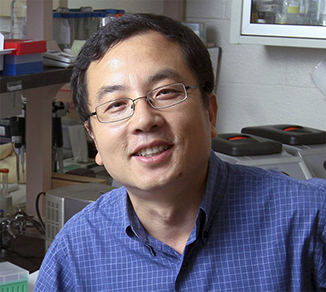Medicine Only Works If You Take It
Using a potentially transformative approach that combines cell-based taste biology with human sensory science, Monell scientists believe they can help solve a deadly problem.
Over two million people in the developing world – many of them children – die each year from malaria, intestinal parasites, HIV/AIDS, and their associated complications.
Yet, while these diseases are treatable, children sometimes reject their vital medicines due to their extraordinary bitterness.

Taste Masking vs. Blocking
Getting children to accept their medications involves first understanding how they taste bitterness and then devising an effective method of interfering with that process.
As an initial step in tackling this problem, Monell assembled a multi-disciplinary team to pursue a unique approach to blocking bitter taste. Now three years into a project funded by the Bill & Melinda Gates Foundation, their efforts are paying off.
Specialized taste receptors on the tongue detect bitter-tasting molecules – the most common source of a medicine’s bad taste – and send that information to the brain for processing. Manufacturers of children’s medicines often add fruit flavoring, sweeteners, and color to their oral medications to counteract bitterness and other off-putting sensory qualities. This technique exemplifies taste masking, which seeks to overwhelm the unpleasant taste with more acceptable tastes and flavors. With taste masking, although the bad taste is partially disguised by the masking additives, it still is detected by the receptors and recognized by the brain.
In contrast, Monell’s approach to the problem focuses on using taste blocking to counteract the offending tastes. Using this tactic, the brain never receives a bitter taste signal from the drug because it is blocked at the tongue receptor.

Because taste blocking is more effective at counteracting bad taste than taste masking, Monell scientists are seeking to identify compounds that can block bitterness, especially bitterness associated with oral medications commonly used to treat life-threatening diseases in children.
How Do You Find Taste Blockers?
One component of the multi-pronged approach involves a collaboration with cell physiologist Erik Schwiebert, PhD, CEO of DiscoveryBioMed, a biotechnology company that specializes in high-throughput assays. These assays are commonly used in the drug discovery process to rapidly conduct large quantities of screening tests.
By combining Monell’s ability to grow living taste cells outside the body with Schwiebert’s high-throughput approach, the team was able to rapidly screen many different chemical compounds to see if they block bitter responses in human taste cells.
After looking at more than 2,000 plant-based compounds, the scientists found several that significantly reduce taste cells’ activation by certain medications, including the exceptionally bitter drug piperaquine, which is used to treat malaria.
In a parallel project, Monell molecular biologist Peihua Jiang, PhD, created a separate assay that can identify which of the 25 different types of human bitter taste receptors is activated by a given medication. This enabled the scientists to determine that piperaquine causes a particularly large response from a bitter receptor called TAS2R39.

Combing the knowledge generated by these approaches, the team tested one of the potential blockers identified in the high-throughput screening process and found that it decreased activation of piperaquine-treated TAS2R39 bitter receptors. This told them that the blocker was having a specific effect at the level of the bitter receptor itself, a compelling finding.
What’s Next?
Ultimately, any potential bitter blocker needs to be tested in humans to determine if it really reduces a drug’s perceived bitterness. Monell sensory biologist Paul Breslin, PhD, leads this third portion of the project. And his results so far are very encouraging.
When Breslin tested that potential piperaquine blocker, he found that people reported that it significantly reduced the bitterness associated with piperaquine. Monell scientists now are continuing to investigate that blocker and several other potential bitter blocking compounds.
The early success of Monell’s interdisciplinary approach demonstrates how the Center’s basic research can be translated into practical solutions with the potential to save the lives of millions of children around the world. The ability to reach from bench to bedside represents the next step in Monell’s mission, directly allowing us to improve health and well-being through increased understanding of taste and smell.


